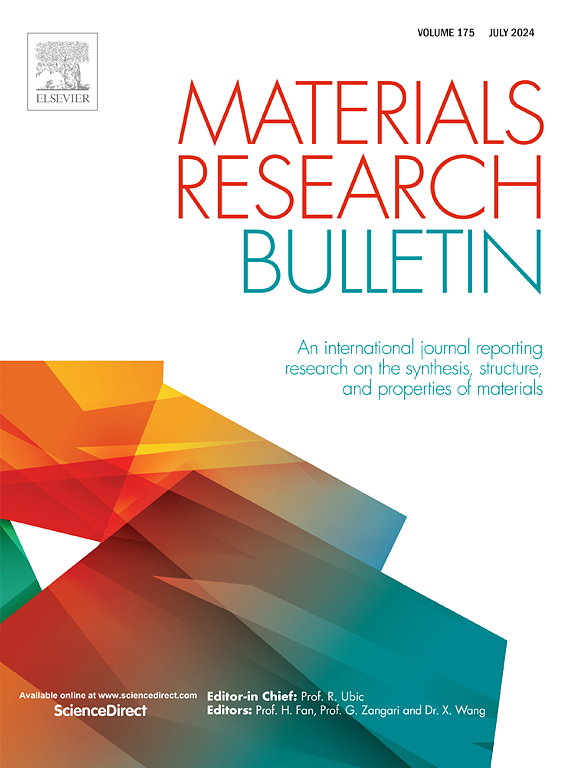Energy transfer in Ce-Sm co-doped in-situ synthesized nanocomposites: Unveiling structural, morphological and photoluminescent properties for enhanced luminescence
IF 5.3
3区 材料科学
Q2 MATERIALS SCIENCE, MULTIDISCIPLINARY
引用次数: 0
Abstract
The Ce³⁺-Sm³⁺ co-doped nanocomposite phosphors, MgO-La1-x-yCexSmyAlO3 (x = 0.009; y = 0 – 0.04), were synthesized via Pechini sol-gel method. XRD and Rietveld refinements corroborated the face-centered cubic crystal structure for MgO and rhombohedral structure for LaAlO₃. FESEM with EDAX revealed inhomogeneous grains with uniform elemental distribution. The optical bandgaps of the nanocomposites were found to range between 5.06 and 5.53 eV. Photoluminescence (PL) excitation and emission spectra, along with time-resolved PL, have been employed to investigate energy transfer behavior from Ce³⁺ to Sm³⁺. The energy transfer mechanism has been attributed to d-d interlinkages, with a transfer efficiency of ∼80% in the MgO-La0.951Ce0.009Sm0.04AlO3. The nanocomposite phosphor MgO-La0.961Ce0.009Sm0.03AlO3 exhibited maximum luminescence among the studied nanocomposites, even higher than the nanophosphor La0.961Ce0.009Sm0.03AlO3. Analysis of parameters, such as correlated color temperature (CCT) and CIE 1931 chromaticity coordinates, demonstrated its potential as a green-to-orange color-tunable cool phosphor, indicating its suitability for diverse photonic applications.

求助全文
约1分钟内获得全文
求助全文
来源期刊

Materials Research Bulletin
工程技术-材料科学:综合
CiteScore
9.80
自引率
5.60%
发文量
372
审稿时长
42 days
期刊介绍:
Materials Research Bulletin is an international journal reporting high-impact research on processing-structure-property relationships in functional materials and nanomaterials with interesting electronic, magnetic, optical, thermal, mechanical or catalytic properties. Papers purely on thermodynamics or theoretical calculations (e.g., density functional theory) do not fall within the scope of the journal unless they also demonstrate a clear link to physical properties. Topics covered include functional materials (e.g., dielectrics, pyroelectrics, piezoelectrics, ferroelectrics, relaxors, thermoelectrics, etc.); electrochemistry and solid-state ionics (e.g., photovoltaics, batteries, sensors, and fuel cells); nanomaterials, graphene, and nanocomposites; luminescence and photocatalysis; crystal-structure and defect-structure analysis; novel electronics; non-crystalline solids; flexible electronics; protein-material interactions; and polymeric ion-exchange membranes.
 求助内容:
求助内容: 应助结果提醒方式:
应助结果提醒方式:


